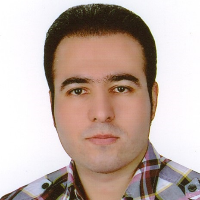Collapsed Cone Superposition Algorithm Validation for Chest Wall Tangential Fields using Virtual Wedge Filters
Virtual wedge (VW) is used in radiotherapy to compensate for missing tissues and create a uniform dose distribution in tissues. According to TECDOC‑1583 and technical reports series no. 430, evaluating the dose calculation accuracy is essential for the quality assurance of treatment planning systems (TPSs). In this study, the dose calculation accuracy of the collapsed cone superposition (CCS) algorithm in the postmastectomy radiotherapy of the chest wall for breast cancer was evaluated by comparing the calculated and measured dose in VW fields.
Two tangential fields with the typical VW angles were planned using ISOgray TPS in a thorax phantom. The CCS algorithm was used for dose calculation at 6 and 15 MV photon beams. The obtained dose distributions from EBT3 film spaces and TPS were evaluated using the gamma index.
The measured and calculated dose values using VW in a heterogeneous medium with different beam energies were in a good agreement with each other (acceptance rate: 88.0%–93.4%). The calculated and measured data did not differ significantly with an increase/decrease in wedge angle. In addition, the results demonstrated that ISOgray overestimated and underestimated the dose of the soft tissue and lung in the planned volume, respectively.
According to the results of gamma index analysis, the calculated dose distribution using VW model with the CCS algorithm in a heterogeneous environment was within acceptable limits.
-
The Effect of Injected and Oral Computed Tomography Contrast Agent on Helical Tomotherapy Dose Calculating in Rectal Cancer
Fatemeh Tabatabayi, Reza Eghdam-Zamiri, *, Tohid Mortezazadeh, Niloofar Kargar
Frontiers in Biomedical Technologies, Spring 2025 -
Assessment of Dose Calculation Accuracy of Monaco Treatment Planning System for Effective Wedge Angle in Internal Wedged Fields using Two Different Analytical Methods
Ali Bahari, Seyed Salman Zakariaee, Hamed Rezaeejam, Ali Tarighatnia, *
Journal of Biomedical Physics & Engineering, Jan-Feb 2025



